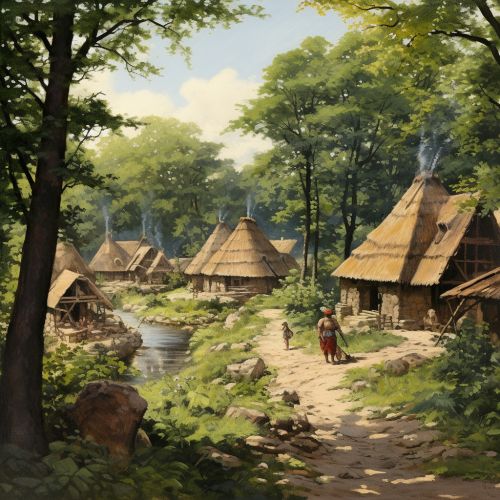Lenape
Introduction
The Lenape or Delaware Indians are a group of Native American tribes who historically inhabited the Delaware Valley, which includes parts of the present-day United States states of Delaware, New Jersey, Pennsylvania, and New York. They are part of the larger Algonquian language family and were known for their farming societies, which were considered to be highly sophisticated for their time.


History
The Lenape have a rich and complex history that spans thousands of years. Their origins can be traced back to the Woodland period, a prehistoric era in North America marked by the development of pottery and the establishment of sedentary agricultural societies.
Pre-European Contact
Before the arrival of European settlers, the Lenape lived in autonomous villages and towns along the Delaware River. They practiced a form of agriculture known as the Three Sisters method, which involved the cultivation of corn, beans, and squash. This farming technique allowed for the efficient use of land and resources, and it played a crucial role in the Lenape's survival and prosperity.
European Contact and Colonization
The first recorded contact between the Lenape and Europeans occurred in the early 17th century, when Dutch explorers arrived in the Delaware Valley. The Lenape initially traded furs and other goods with the Dutch, but relations quickly deteriorated due to cultural misunderstandings and disputes over land.
The Lenape were eventually displaced from their ancestral lands through a series of treaties, forced removals, and violent conflicts known collectively as the American Indian Wars. Many Lenape were relocated to reservations in Oklahoma, Wisconsin, and Ontario, Canada.
Culture
The Lenape culture is characterized by a deep respect for nature and a strong sense of community. They traditionally lived in longhouses, large communal dwellings made of wood and bark. The Lenape were also known for their intricate beadwork, pottery, and basket weaving.
Religion and Spirituality
The Lenape believed in a complex spiritual system that included a variety of deities and spirits. They practiced a form of animism, believing that all living and non-living things possessed a spiritual essence. The Lenape also believed in the concept of Manitou, a spiritual and fundamental life force that exists in all things.
Social Structure
The Lenape society was matrilineal, meaning that descent and inheritance were passed down through the mother's line. Clans, or extended family groups, were the primary social units within Lenape society. Each clan was associated with a specific animal totem, such as the Turtle, Wolf, or Turkey.
Modern Lenape
Today, the Lenape continue to maintain their cultural traditions while also participating in modern society. There are several federally recognized Lenape tribes in the United States and Canada, including the Delaware Nation, the Delaware Tribe of Indians, and the Munsee-Delaware Nation.
Despite the challenges they have faced, the Lenape remain resilient and committed to preserving their heritage. They continue to practice traditional arts and crafts, hold cultural events, and teach their language to younger generations.
